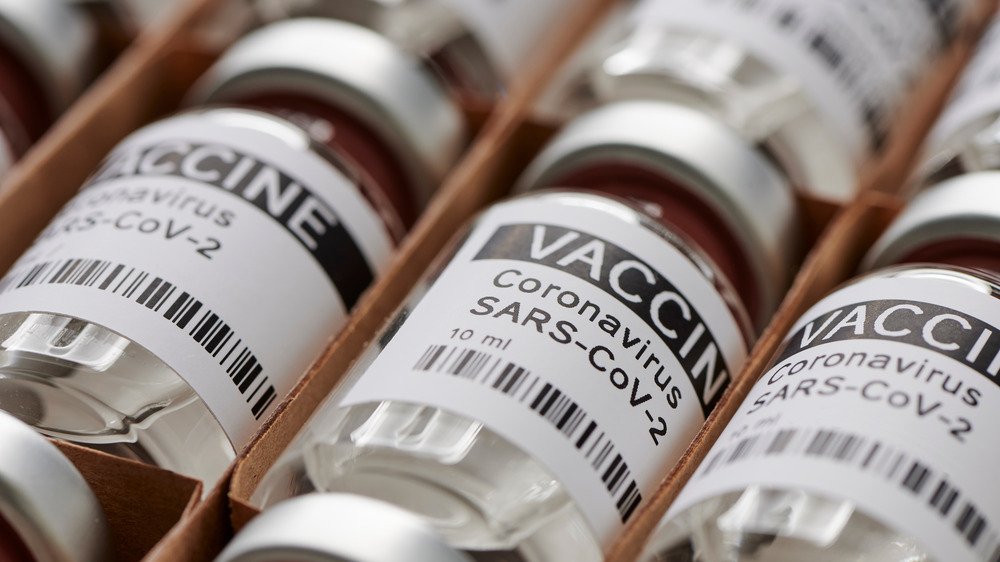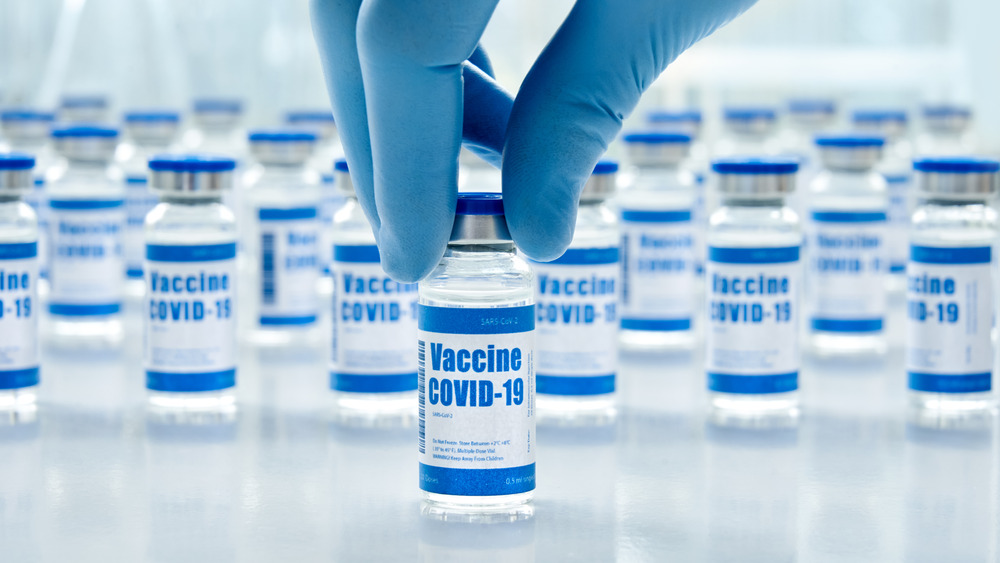What Really Happens When A COVID-19 Vaccine Doesn't Get Used
You may have heard some reports that COVID-19 vaccines go to waste at the end of the day if they aren't used. With this information circulating comes controversy about people skipping ahead of their phase, or waiting in line to get leftover vaccines.
This raises the question — does the COVID-19 vaccination truly go to waste if unused at the end of the day? In the case of the Moderna and Pfizer vaccines, the answer is typically yes. Due to fragility of these mRNA vaccinations in particular, storage is required at freezing temperatures. Once the vaccine vials are taken out of the freezer and punctured, they must be used within six hours or they are rendered unusable (via Parade).
Pharmacists then must scramble to find replacements for the thawed vaccine vials if there are appointment no-shows, according to ProPublica. This leads to what people are calling "vaccine chasers," showing up for leftover vaccines without an appointment, although there are no guarantees you will receive a vaccine with this method (via KING 5).
How some are spreading the word about unused vaccines
Public health experts appear to be in agreement that getting a vaccine administered to someone ahead of their phase or status is better than the vaccine going to waste, with the Centers for Disease Control and Prevention urging a "flexible approach" if it is in danger of going unused, according to USA Today.
The vaccine shelf-life also has people getting creative about spreading the word about available COVID vaccines. Dr. B, a standby list that texts eligible users about extra doses nearby that may go unused, is one example of how technology is helping COVID-19 vaccines not go to waste.
Inevitably, some vaccines are not used, a common occurrence in every mass vaccination effort. Vaccine wastage is currently being monitored, as required by the Centers for Disease Control and Prevention. Moving forward, leftover doses may not be as much of an issue, as vaccines become less fragile to temperature fluctuations.


